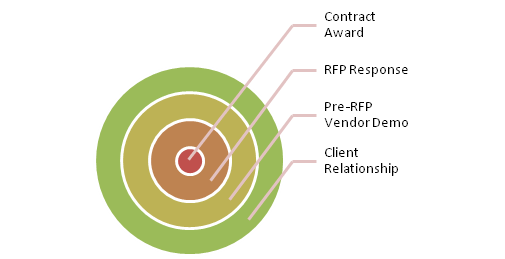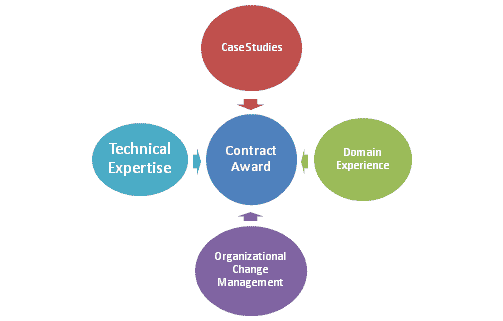The story so far: Account executives have flexed their muscle, marketing has worked their magic and the CEO and the executive leaders of your organization have done everything they could to establish the C-level client relationship to ensure you are in the short list for the RFP.
Now – the all important RFP meeting. The client team has sent out a set of pre-RFP questions and has setup a series of meetings with each vendor to make the presentation. I am sure many of you have been in these situations and have handled these successfully. Let us try and examine a few questions that come up during such presentations.
How many vendors are generally selected for these presentations? Typically it is the same number of vendors who are shortlisted for the RFP. In my 14 years experience, it has been 3-4 vendors and the fact that the organization made it to the short list is an achievement in itself. Many factors influence the short list of vendors. It depends on a) number of towers the RFP is issued for; b) the cross functional nature of the RFP; c)the strength of the relationship with the executives; d) the outcome of Phase 0 analysis; and e) the expertise of the consulting organization.

Why do client organizations have the Pre-RFP vendor demos? While most of the decisions are made at the executive level, leaders of the organization want to make sure the consulting organizations are vetted thoroughly. The Pre-RFP demo is to basically to build confidence in the broader organization about the skill sets consultants bring to the table. These demos generally can explode in participation. They typically start with a team of 7-8 people and can easily expand up to 30 people. Again this depends on the depth and breadth of the RFP.
What is the structure of the presentation? Typically these presentations are lengthy and could be as long as 3-4 hours in duration. The structure generally is:
- Brief introduction about the company
- Options / approach for clients issues
- Case studies / experience
- Recommended solution
- Q&A
Notice that cost and ROI-related questions are generally avoided in the pre-RFP response. There might be questions around high level expectations on cost savings, but in general cost and ROI-related questions are not the focus of the presentation.
Now let us try and examine some key questions that come up during the RFP vendor demo if you are bidding for a large project across various geographies and functions.

How would you do this if you were engaged earlier in the game and what is your recommendation? I have seen this question come up many times so far and this can be a very tricky question. However, if we were to examine the question properly, one would sense loads of opportunity. This is typically asked when the client is not happy with the way things are going so far and also wants to make sure the approach this time around is different and more involved. The safest answer to this would be something like… “In the last few projects we have seen…. However, we would like to build the process and approach together with you to understand the current issues, your key pain points etc.” Ideally, getting the homework done through your network before the presentation will help you present a better response to the client.
How do you propose to handle the organizational change component? A true IT consulting partner is always prepared for this question. The key to a successful IT implementation is the organizational readiness, the adoption of the solution and the buy in from process owners.
What domain knowledge do you bring to the table? Gone are the days when vendors are awarded a contract based on price alone. Clients now want true partners. They want the consultants to possess deep domain knowledge and understanding of the client’s business processes. It is always a good idea to take a seasoned process/domain consultant to key client presentations.
A few tips for the presentation:
- Never have detailed structural methodology diagrams. Remember that you are presenting to hands-on people and it is easy for them to pick holes in the methodology.
- Always have case studies from the same vertical to share.
- Make sure you have built in details for knowledge transfer and how that is going to be handled.
- Always have your senior practice leaders present at the table.
- Make sure the project manager who is going to handle the actual project gets adequate face time and presentation material.
What do you think are important in the first meeting? Share your thoughts in the Comments field below.
Copyright © 2010 Sarat Varanasi



Questions:
– What should be the content and structure of a pre-RFP?.
– Based on the previous point, what information must be provided to suppliers?
– may you provide me with a pre-rfp example or may you provide me with a link where i can find a pre-rfp example?